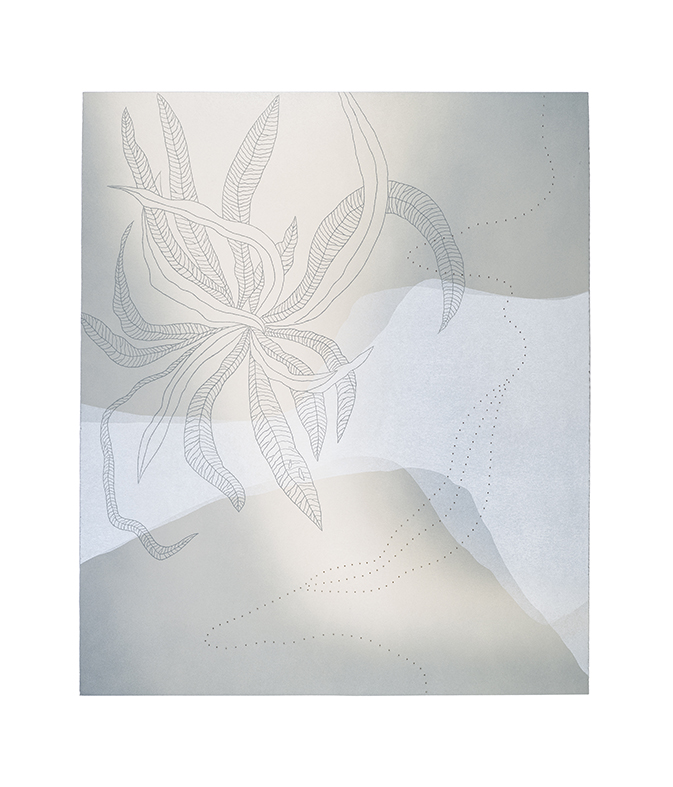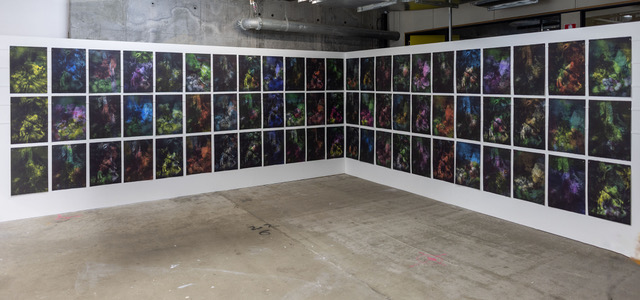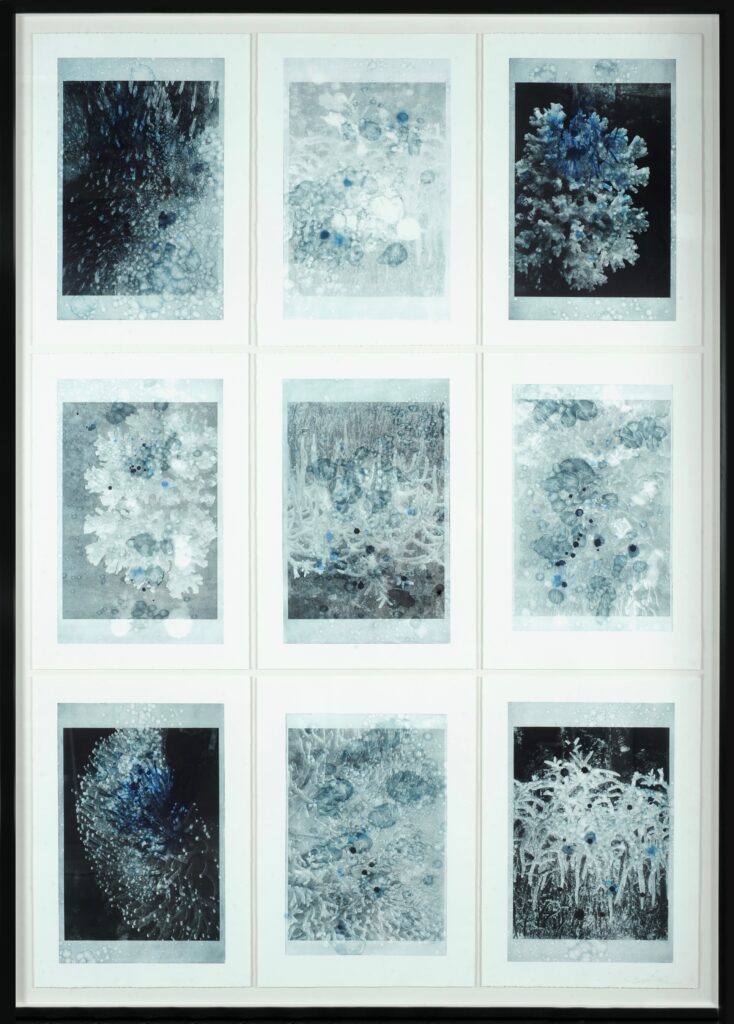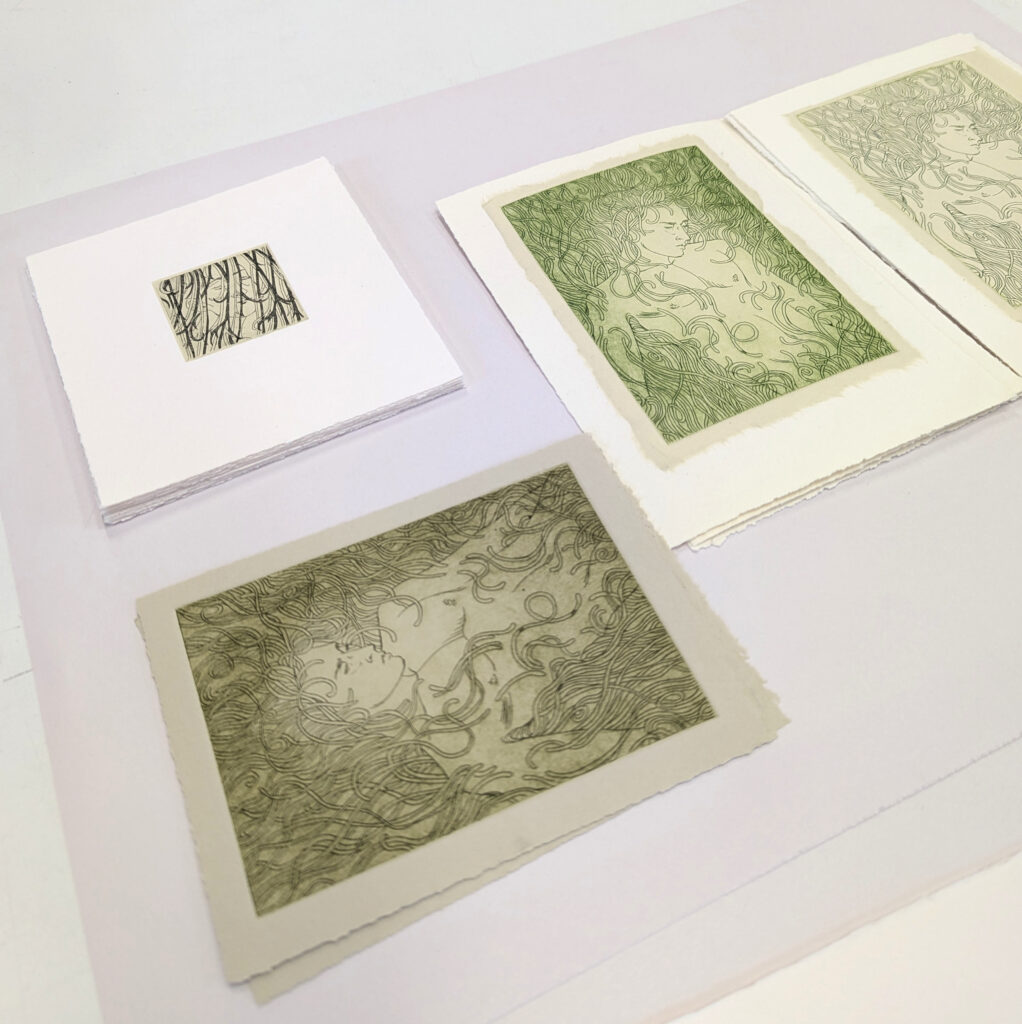Above:
Lake call #2, 2021, intaglio collagraph, stencil, perforations 66.5 x 54cm
Below:
Longing, 2017, intaglio collagraph 34 x 114cm (diptych)
Collecting Thoughts – Lake Sorell II, 2023, intaglio collagraph and carborundum 140 x 112cm (4 panels)
Momentary Worlds (Cloud), 2017, intaglio collagraph 42.5cm x 32cm
Galaxial Threads, 2023, intaglio collagraph and carborundum 45 x 152cm (diptych)
Hushing (Day), 2021, intaglio collagraph and carborundum 112 x 304cm ( 8 panels)

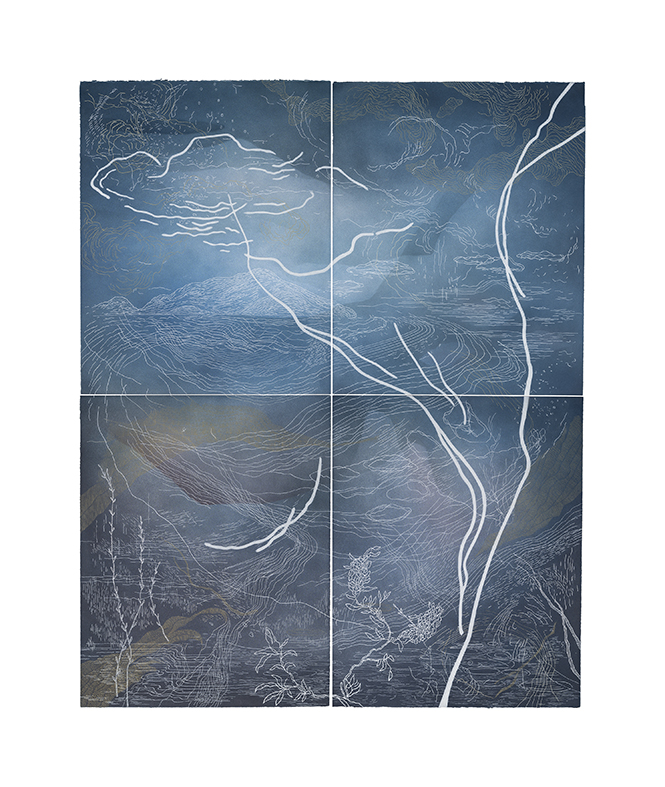
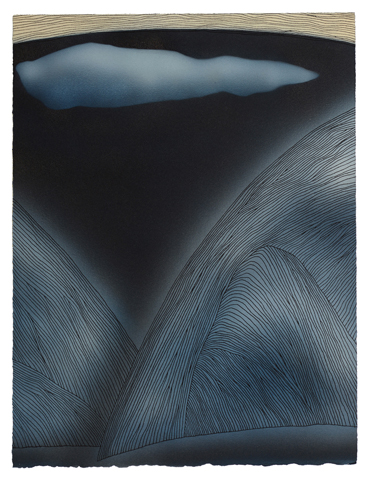
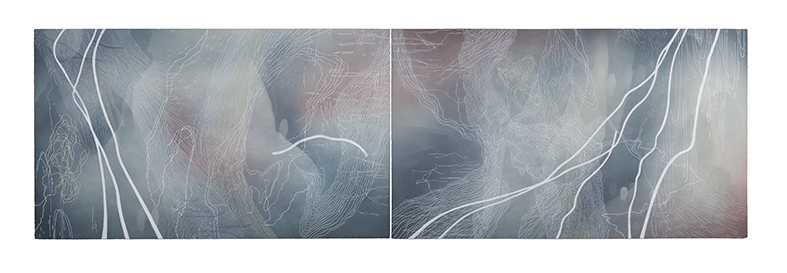
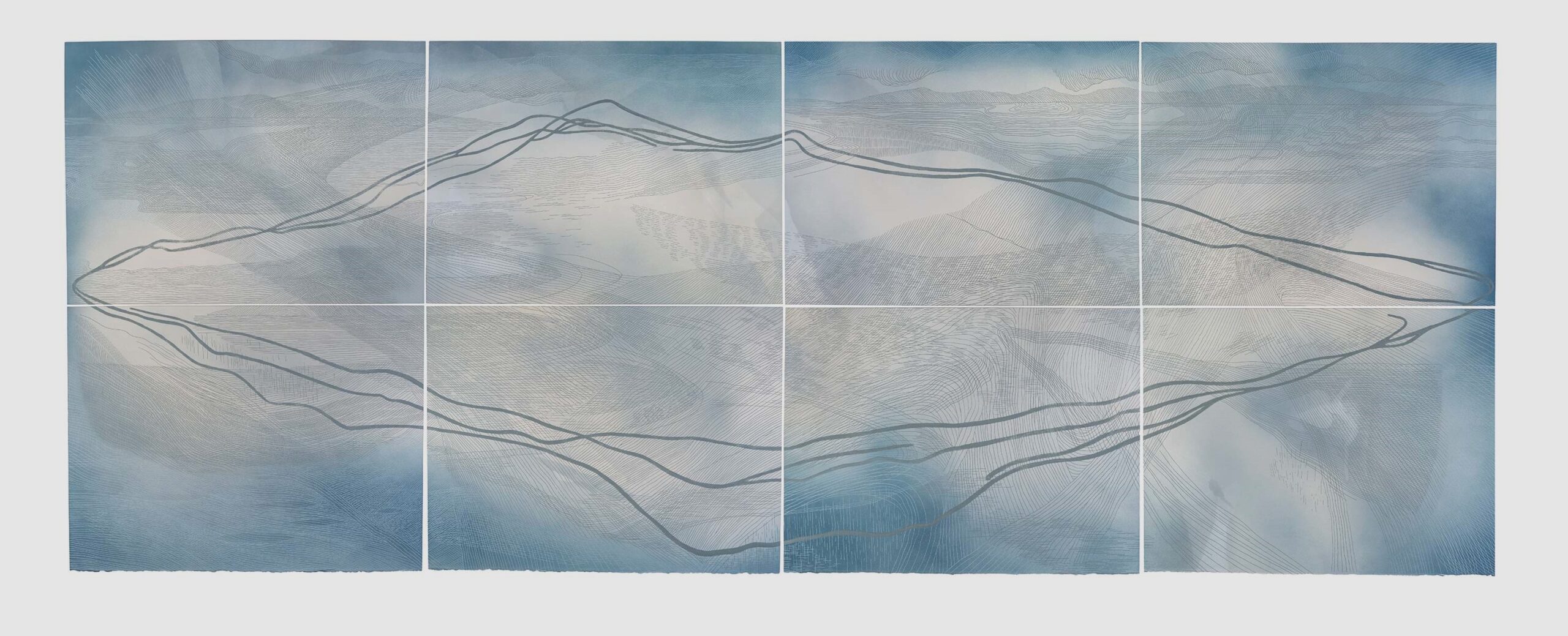
Tendrilled organic lines reach out over each frame to connect to each other in infinite ways. This family of works is one gathering of many narratives of landscape and memory that are those known only to the artist, yet have a pattern and universal language of knowing and experience that is hard to pin down, but strangely familiar. This is what the experience was for me sitting alone and silently in Melissa Smith’s exhibition at the Queen Victoria Museum and Art Gallery. I guess it is one of the great privileges of a curator to have the space and time to yourself to allow the complete experience, depth of talent and dedication to the craft and tradition an artist’s practice, to take you on one of many quiet, soulful and emotional resonant journeys.
When I consider Smith’s commitment to printmaking practice, and I observe each distillation of her work in a gallery context, it makes me think of the term ‘unique state’. This terminology refers to the printing material or plate having the potential to be one of many through design and concept, but which instead becomes an individual and single work. Tracing a Line has that same unique and single expression that is different from other exhibitions; yet at the same time the combination of works that span a longer period of time echoes the return to places, gentle tonal shifts, and colours falling back and pushing forward to make the exhibition space as big or small as the work allows you to experience in each encounter.
The foundation of Smith’s work that continues to draw me to a point of anticipation when experiencing new works and opportunities of those fresh gatherings is captured within her innate ability to translate her love and connection to landscape from listening to the land, sea, lake, grass and trees of place. Then through the collection of those signature traces via drawing to the inner sanctum of the studio, where the magic of the ephemeral experience becomes the indelible mark and trace. The landscape of Tasmania has driven Smith’s practice since she arrived here more than three decades ago, having already experienced the culturally resonant and dramatic landscapes of the Northern Territory years before. In this exhibition we see work that is a return to a Tasmanian location that has become an important touchstone site for Smith for many years: Lake Sorell, in the Central Highlands region of midland Tasmania.
In Smith’s Lake Sorell works we view a devotion and return to a landscape of retreat, of family memory, and experience of a home away from home; a landscape coming together through seasonal change and nostalgia. A place in time and space that pulls her back to listen again and again, to profoundly understand that this place is a location of deep time and personal connection that allows for some of the most cohesive and compositionally rich works on paper in this exhibition.
It is difficult to single out works in Tracing a Line, as the great benefit of exhibitions like this is how each piece is part of the unique state edition and how together they glow and impact the observer – almost as if they were always meant to be together. A band of balance, harmony and rhythm. One work in particular, Hushing (Day), calls out to the reflective surface and memory of listening to Lake Sorell. Through this work, time and the knowing of a place – one that is familiar yet with much more to reveal and impart to the artist – is explored through Smith’s own experiences.
The marks and lines that trace through her practice over time give rise to Smith’s growth as an artist and someone who has had education, arts practice and curatorial work in many and varied locations around the State. Her practice has evolved to allow for chance and moments of unpredictability to happen in the studio – listening becomes as much of the process of making art as does the initial conception of ideas.
These marks and lines cross and become both contained and free in the one space, allowing the lines to trace unseeable vibrations of the sound of cracking brittle bark on an ancient tree, to the even older weathered and jagged edges of the mountain ranges seen through her eyes – in much the same way thousands of generations of Tasmanian Aboriginal people referred the landscape as a mother to their cultural practices.
The stoic landscape of the land is captured in traced lines that cut through the very walls of the gallery, interacting with the infinite nature of human existence, with Smith part of the historic language of the creative capturing of the landscape in the lines she traces, and will continue to trace in the future.
Dr Ashley Bird is Senior Curator Visual Art and Design at Queen Victoria Museum and Art Gallery
—
—
Join the PCA and become a member. You’ll get the fine-art quarterly print magazine Imprint, free promotion of your exhibitions, discounts on art materials and a range of other exclusive benefits.

